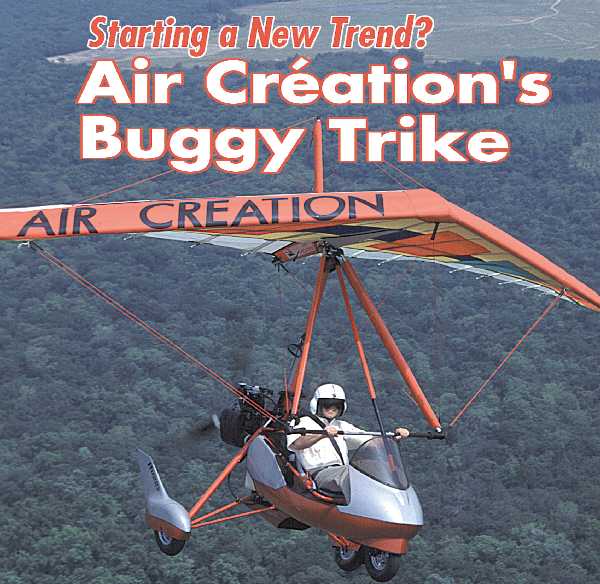
Red is the best color for marketing reasons I was told by a Detroit car marketing executive with a half million a year salary. If you’ve seen a Chrysler TV ad recently, you can see they painted all the cars and trucks bright red. Published in Light Sport and Ultralight Flying Seating Single- or 2-seat Empty weight 386 pounds Gross weight 772 pounds Wingspan 30 feet Wing area 135 square feet Wing loading 5.7 pounds/sq ft Wing Trike Height 11 feet 7 inches Fuel Capacity 9.9 gallons Kit type Assembly Build time 30-60 hours Standard engine Rotax 582 Power 65 horsepower Power loading 11.9 pounds/hp Cruise speed 56-74 mph Never exceed speed 87 mph Rate of climb at gross 1,477 fpm Standard Features Twin trike carriage, XP 12 double-surface wing, weight-shift control, hand and foot throttles, steerable nosewheel (push-left, go-right) with brake and mudguard, parking brake, wheel pants, pneumatic suspension, instrument panel, lap seat belt, regulator, water temp, Rotax C gearbox, intake/exhaust silencers, full fairing with windshield, 3-blade composite prop, back seat storage.











